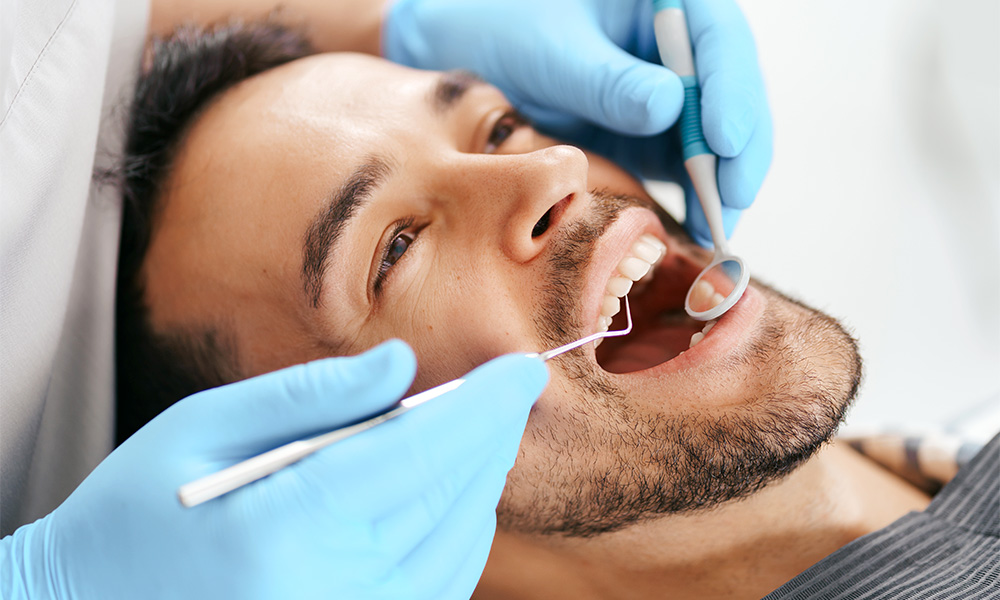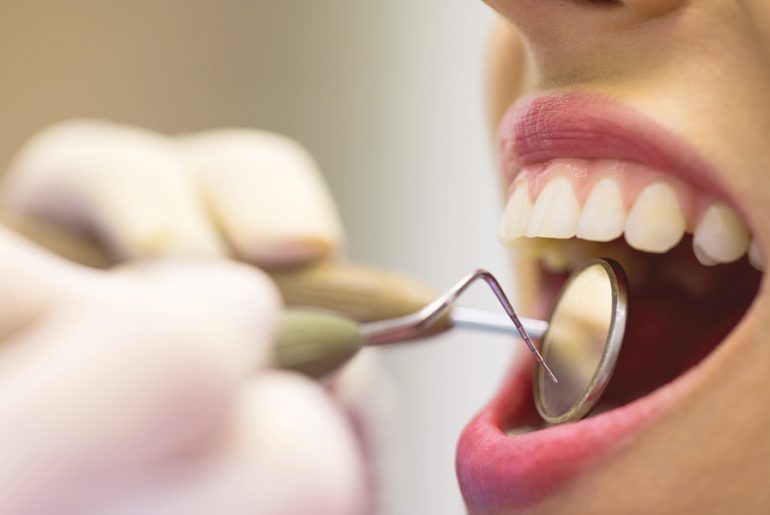A calculus bridge is one of the worst types of dental plaque that forms when someone doesn’t take care of their teeth properly. This hardened deposit formation occurs when calcified plaque extends across multiple teeth, creating a bridge-like structure that connects them along the gumline. Unlike regular plaque that can be removed with daily brushing and flossing, this mineralized buildup requires professional dental intervention to eliminate completely.
The formation of these hardened deposits happens gradually, typically developing over weeks or months of inadequate oral care. What begins as soft, sticky plaque transforms into a rock-hard substance that adheres firmly to tooth surfaces and can extend deep below the gumline, creating serious oral health complications.
What Causes Calculus Bridge Formation?
Poor Oral Hygiene Practices
The primary cause behind calculus bridge development stems from insufficient daily oral care routines. When plaque accumulates without regular removal, the mineralization process starts surprisingly quickly typically beginning within one to three days of formation. This transformation from soft plaque to hardened tartar occurs as calcium and phosphate from saliva interact with bacterial deposits.
Bacterial Plaque Accumulation
The hardening process occurs as minerals naturally found in saliva and gum fluid combine with bacterial plaque, forming a cement-like substance that firmly bonds to tooth surfaces. The bacteria present in plaque die during this mineralization process, but the resulting hardened surface creates an ideal environment for additional plaque formation.
Individual Risk Factors
Several factors can increase your likelihood of developing these formations:
- Saliva composition and pH levels
- Calcium content in saliva
- Genetic predisposition to tartar buildup
- Certain medications that reduce saliva production
- Tobacco use
- Age-related changes in oral health
Recognizing the Signs and Symptoms
Visual Indicators
The most obvious sign is the presence of hard, yellowish-brown deposits that span across multiple teeth. These formations typically appear along the gumline and can vary in color from light yellow to dark brown or even black.
Physical Symptoms
Patients often experience:
- Persistent bad breath despite brushing
- Swollen, red, or bleeding gums
- Tooth sensitivity
- Rough texture when running tongue over teeth
- Difficulty flossing between affected teeth
Advanced Warning Signs
More severe cases may present with:
- Loose teeth
- Gum recession
- Persistent metallic taste
- Pain when chewing
- Visible pus around the gumline
Health Complications and Risks
Gum Disease Development
The rough texture of the hard deposits makes it a perfect place for bad bacteria to grow. The result is often gum inflammation that begins as gingivitis and can advance to severe periodontal conditions without proper intervention.
Tooth Decay and Cavities
The rough surface of hardened deposits creates an ideal environment for harmful bacteria to thrive, significantly elevating the likelihood of tooth decay and cavity formation. The bacteria stuck under these hard coatings make acids that wear away the enamel on teeth, causing cavities that can go deep into the tooth.
Systemic Health Connections
Scientific studies have established links between periodontal conditions and various health issues including cardiovascular disease, diabetic complications, and breathing disorders. Constant inflammation caused by heavy tartar buildup can cause various health issues overall.
Potential Tooth Loss
If dental decay isn’t treated, it can go deep into the tooth, possibly reaching the pulp chamber. Advanced cases may necessitate endodontic therapy to preserve the tooth, while extremely damaged teeth might require complete removal.

Professional Treatment Options
Scaling and Root Planing
When hardened tartar deposits have formed across multiple teeth, home oral care methods become ineffective at removal. Professional dental intervention is essential to eliminate these mineralized formations completely. The primary treatment involves:
Manual Scaling
Dental professionals employ specialized manual instruments with curved tips to meticulously scrape away mineralized deposits from tooth surfaces and beneath the gumline.
Ultrasonic Scaling
For easier and more efficient cleaning, a tool called an ultrasonic scaler is often used. It uses vibrations along with water to help remove deposits quickly. This technique employs rapid sonic vibrations combined with water irrigation to fragment and dislodge calcified buildup.
Root Planing
After that, the rough areas on the roots are made smooth through a procedure known as root planing. This polishing procedure facilitates healthy gum tissue reattachment while eliminating irregular surfaces where harmful bacteria typically colonize.
Deep Cleaning Procedures
When tartar deposits have penetrated deeply beneath the gum tissue, comprehensive periodontal therapy becomes essential. Advanced cases often require thorough debridement procedures conducted with numbing agents to maintain patient comfort throughout treatment.
Multiple Treatment Sessions
Depending on the severity and extent of the buildup, treatment may require several appointments to completely remove all deposits and allow gums to heal properly.
Prevention Strategies
Daily Oral Hygiene Routine
The most effective prevention method involves maintaining consistent daily oral care:
- Brush teeth twice daily with fluoride toothpaste
- Apply effective brushing methods for a minimum of two minutes per session
- Floss daily to remove plaque between teeth
- Consider using an antimicrobial mouthwash
Professional Dental Care
Effective prevention requires maintaining excellent daily oral care habits, scheduling biannual dental appointments, and following a nutritious eating plan. Routine professional cleanings enable hygienists to eliminate soft plaque deposits before they mineralize into hardened calculus.
Dietary Considerations
Certain dietary choices can help prevent plaque formation:
- Limit sugary and starchy foods
- Drink plenty of water throughout the day
- Choose calcium-rich foods that strengthen teeth
- Avoid frequent snacking that feeds harmful bacteria
Additional Preventive Measures
- Quit tobacco use, which increases tartar formation
- Electric toothbrushes can clean plaque more effectively than brushing with a manual toothbrush
- Change brush heads or toothbrushes every 90-120 days for optimal effectiveness
- Use tartar-control toothpaste formulated to prevent mineralization
When to Seek Professional Help
Early Intervention Signs
Don’t wait for severe symptoms to develop. Seek dental care when you notice:
- Hard deposits forming along the gumline
- Persistent bleeding during brushing or flossing
- Bad breath that doesn’t improve with oral hygiene
- Changes in gum color or texture
Emergency Situations
Immediate dental attention is needed if you experience:
- Severe tooth pain
- Visible pus or abscesses
- Extremely loose teeth
- Difficulty eating or speaking
Long-term Oral Health Management
Maintenance After Treatment
Following professional removal, maintaining the results requires dedication to improved oral hygiene habits. Your dental professional may recommend more frequent cleanings initially to prevent reformation.
Monitoring and Follow-up
Regular dental checkups become even more important after experiencing calculus bridge formation, as you may be at higher risk for recurrence. Dental professionals can detect initial warning symptoms and take preventive action before conditions worsen significantly.
Lifestyle Modifications
Consider making permanent changes to support better oral health, such as improving your diet, quitting tobacco use, and establishing more thorough daily cleaning routines.
Conclusion
Calculus bridge formation represents a serious oral health condition that requires professional treatment and ongoing prevention efforts. While these hardened deposits cannot be removed through home care alone, they are entirely preventable with proper daily oral hygiene and regular dental visits. Understanding the causes, recognizing early warning signs, and seeking prompt treatment can help preserve your oral health and prevent serious complications like tooth loss or systemic health problems. Remember that prevention is always more effective and less costly than treatment, making consistent oral care habits one of the best investments you can make in your overall health and wellbeing.






